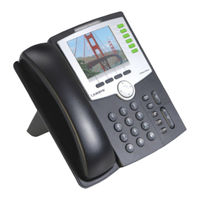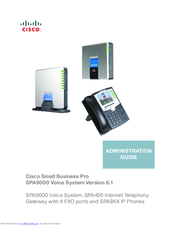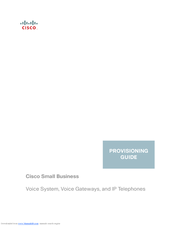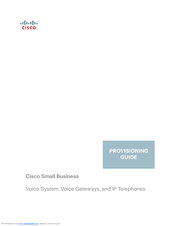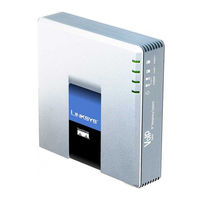Cisco Linksys SPA9000 Manuals
Manuals and User Guides for Cisco Linksys SPA9000. We have 5 Cisco Linksys SPA9000 manuals available for free PDF download: Administration Manual, Provisioning Manual, Faq
Cisco Linksys SPA9000 Administration Manual (286 pages)
Cisco Small Business Pro Voice System Internet Telephony Gateway with 4 FXO ports and IP Phones
Table of Contents
Advertisement
Cisco Linksys SPA9000 Administration Manual (286 pages)
Small Business Pro Voice System Version 6.1
Brand: Cisco
|
Category: Telephone Accessories
|
Size: 7.9 MB
Table of Contents
Cisco Linksys SPA9000 Provisioning Manual (114 pages)
Voice System, Voice Gateways, and IP Telephones
Brand: Cisco
|
Category: Network Hardware
|
Size: 0.83 MB
Table of Contents
Advertisement
Cisco Linksys SPA9000 Provisioning Manual (116 pages)
Voice System, Voice Gateways, and IP Telephones
Table of Contents
Cisco Linksys SPA9000 Faq (5 pages)
Troubleshooting SPA Device
